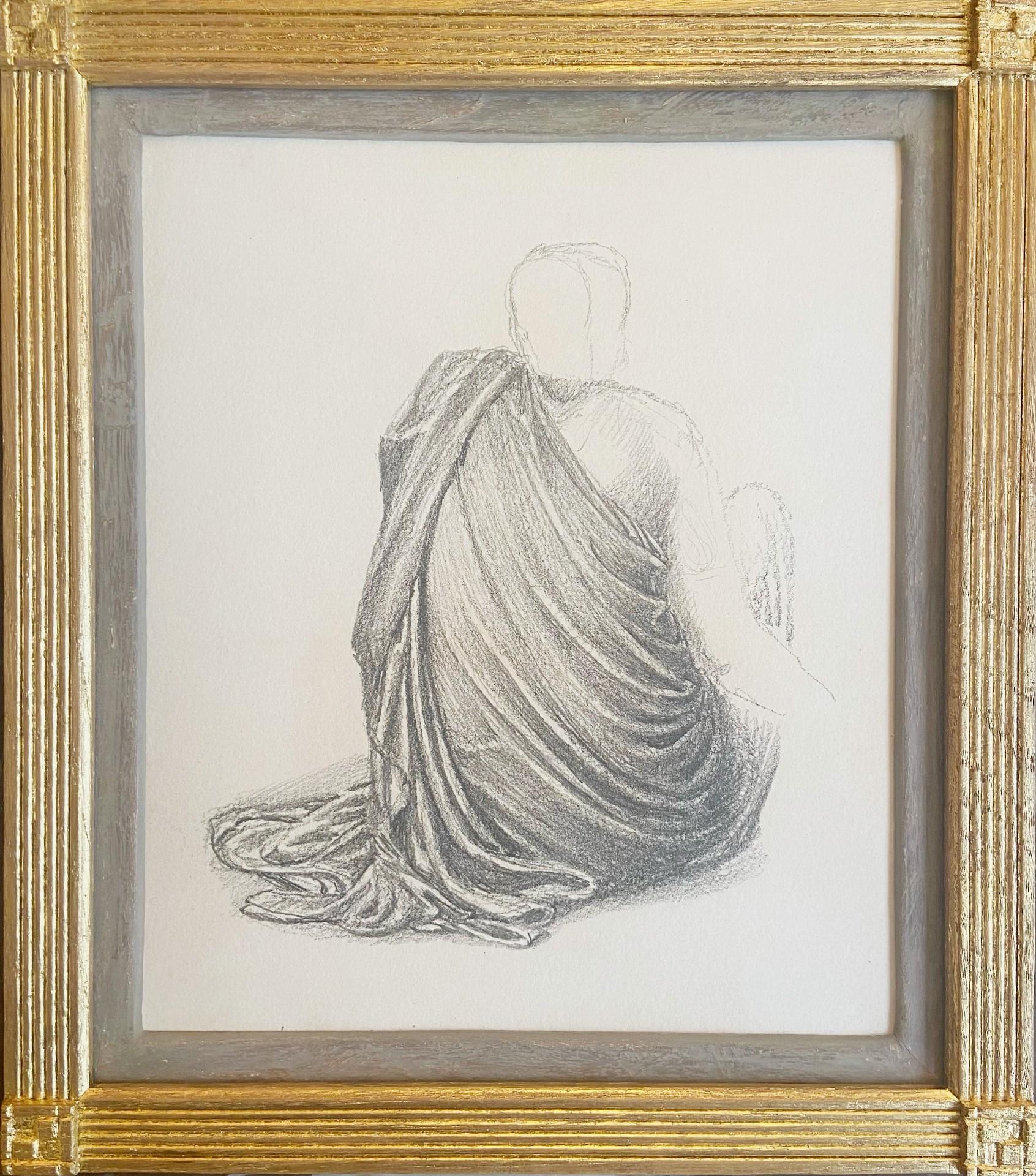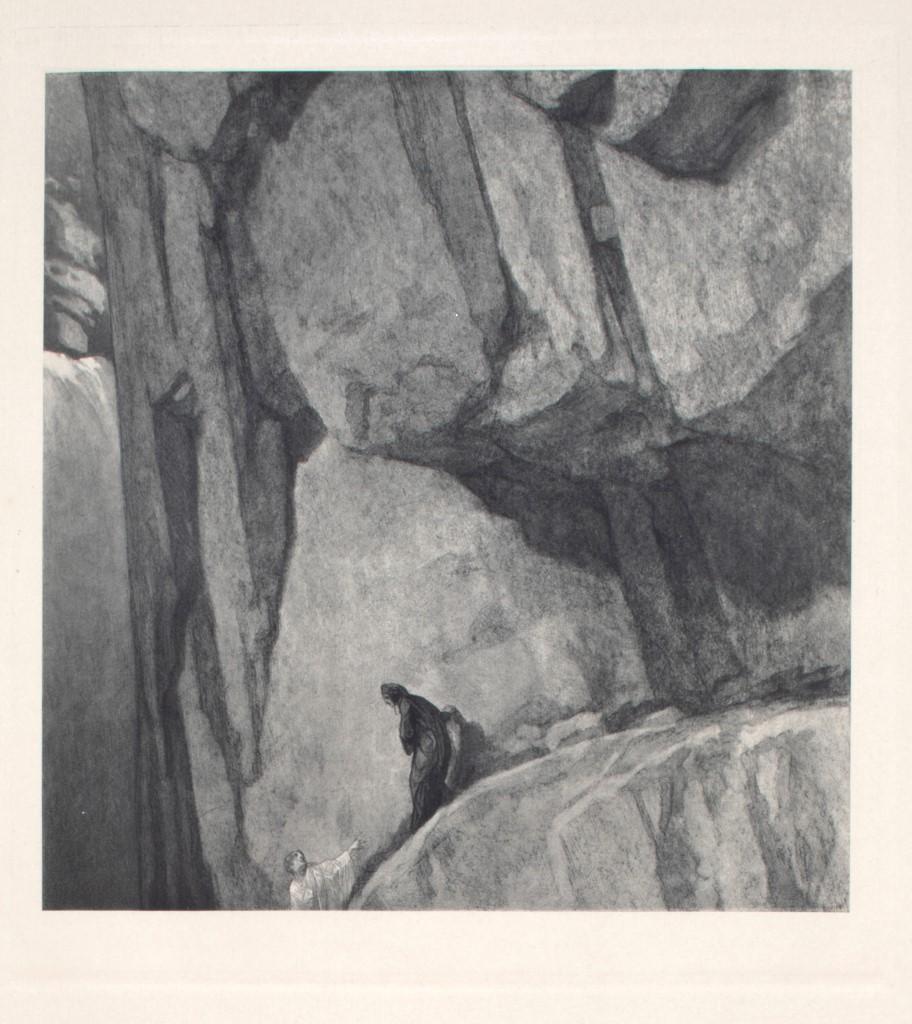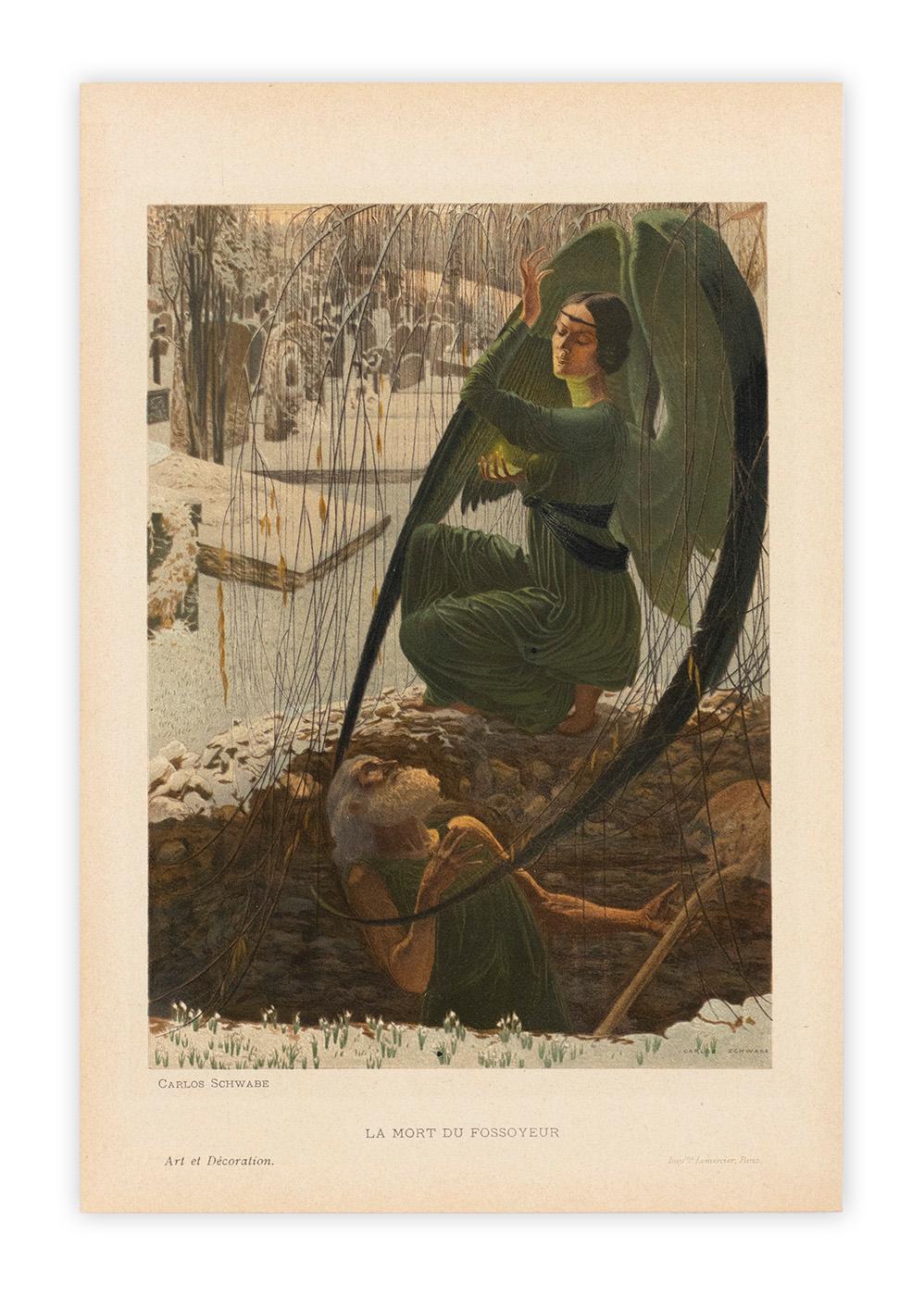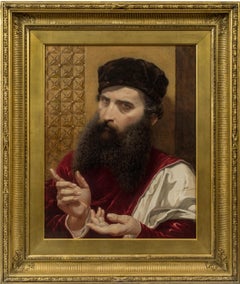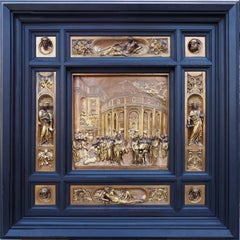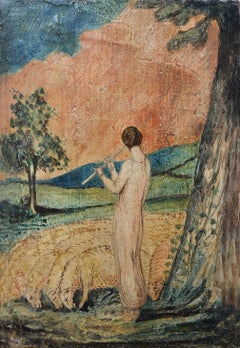Items Similar to Ezekiel in the Valley of Dry Bones
Want more images or videos?
Request additional images or videos from the seller
1 of 6
Philip Burne-JonesEzekiel in the Valley of Dry Bones
$44,500
£33,100.48
€38,754.12
CA$62,092.61
A$69,483.38
CHF 36,280.95
MX$854,225.77
NOK 457,726.06
SEK 430,717.97
DKK 289,135.43
Shipping
Retrieving quote...The 1stDibs Promise:
Authenticity Guarantee,
Money-Back Guarantee,
24-Hour Cancellation
About the Item
Provenance:
Christie’s, London, 3 March 1922, lot 46 (with The Tower of Babel);
James Nicoll
Private Collection
Sotheby’s, London, 29 March 1983, lot 157
Private Collection, New York (1983–present)
Exhibited:
The New Gallery, 1888.
Works by Sir Philip Burne-Jones, Bt., The Dowdeswell Galleries, London, April – May 1914.
Literature:
“The Pictures of 1888,” Pall Mall Gazette Extra, no. 41 (1888), p. 77, ill.
Cosmo Monkhouse, “The New Gallery; II,” The Academy, vol. 3, no. 849 (1888), p. 419.
Martin Harrison and Bill Waters, Burne-Jones, London, 1973, p. 180.
Philip Burne-Jones was the only son of Sir Edward Coley Burne-Jones and, like his father, painted from an early age. He was educated at Marlborough and at University College, Oxford, but had little academic success. Philip began to exhibit at the Grosvenor Gallery in 1886 but preferred to show at the New Gallery from its opening two years later, where the present painting first appeared. He produced a few literary pictures at the beginning of his career but specialized in landscapes and portraits. Harrison and Waters have written that Philip “had a talent for portraiture and landscape, and like George Howard, infrequently ventured into imaginative or figure work. Working mostly in gouache or watercolour, once again like Howard, his style could never be confused with his father’s though it approaches it in Ezekiel in the Valley of Dry Bones, which was exhibited at the New Gallery in 1888.”
Philip’s portraits of his father, his uncle Rudyard Kipling, and Sir Edward J. Poynter hang in the National Portrait Gallery, but few of his works are in public collections. His most celebrated painting in his day was The Vampire, an 1897 canvas that was said to inspire a poem by Kipling; its present location is unknown.
Ezekiel in the Valley of Dry Bones is one of the artist’s finest and most evocative paintings. The subject is taken from Ezekiel 37:1-10 (with special reference to 37:2) and is a remarkable portrayal of the Biblical scene. Here Philip follows in the footsteps of his father, with a composition at once mysterious and romantic, and alimited palette here punctuated by the brilliant orange spot of the setting sun. Writing at the time of the New Gallery exhibition, Cosmo Monkhouse described Philip Burne-Jones’s Ezekiel as “the most impressive picture he has yet exhibited.”
When sold in 1922, Ezekiel in the Valley of Dry Bones was paired with another painting by the artist, The Tower of Babel. That work, dated 1889, is at present lost, having last appeared at auction at Sotheby’s, Belgravia, 6 December 1977, lot 100.
- Creator:Philip Burne-Jones (1861 - 1926, British)
- Dimensions:Height: 23 in (58.42 cm)Width: 18 in (45.72 cm)
- Medium:
- Movement & Style:
- Period:
- Condition:
- Gallery Location:New York, NY
- Reference Number:1stDibs: LU1021074663

About the Seller
5.0
Recognized Seller
These prestigious sellers are industry leaders and represent the highest echelon for item quality and design.
Established in 1997
1stDibs seller since 2012
21 sales on 1stDibs
Typical response time: 12 hours
- ShippingRetrieving quote...Shipping from: New York, NY
- Return Policy
Authenticity Guarantee
In the unlikely event there’s an issue with an item’s authenticity, contact us within 1 year for a full refund. DetailsMoney-Back Guarantee
If your item is not as described, is damaged in transit, or does not arrive, contact us within 7 days for a full refund. Details24-Hour Cancellation
You have a 24-hour grace period in which to reconsider your purchase, with no questions asked.Vetted Professional Sellers
Our world-class sellers must adhere to strict standards for service and quality, maintaining the integrity of our listings.Price-Match Guarantee
If you find that a seller listed the same item for a lower price elsewhere, we’ll match it.Trusted Global Delivery
Our best-in-class carrier network provides specialized shipping options worldwide, including custom delivery.More From This Seller
View AllThe Resurrection of Christ
Located in New York, NY
Provenance:
with “Mr. Scheer,” Vienna, by July 1918; where acquired by:
Jindřich Waldes, Prague, 1918–1941; thence by descent to:
Private Collection, New York
Literature:
Rudolf Kuchynka, “České obrazy tabulové ve Waldesově obrazárně,” Památky archeologické, vol. 31 (1919), pp. 62-64, fig. 5.
Jaroslav Pešina, “K datování deskových obrazů ve Waldesově obrazárně,” Ročenka Kruhu pro Pěstování Dějin Umění: za rok (1934), pp. 131-137.
Jaroslav Pešina, Pozdně gotické deskové malířství v Čechách, Prague, 1940, pp. 150-151, 220.
Patrik Šimon, Jindřich Waldes: sběratel umění, Prague, 2001, pp. 166, 168, footnote 190.
Ivo Hlobil, “Tři gotické obrazy ze sbírky Jindřicha Waldese,” Umění, vol. 52, no. 4 (2004), p. 369.
Executed sometime in the 1380s or 1390s by a close associate of the Master of the
Třeboň Altarpiece, this impressive panel is a rare work created at the royal court in Prague and a significant re-discovery for the corpus of early Bohemian painting. It has emerged from an American collection, descendants of the celebrated Czech industrialist and collector Jindřich Waldes, who died in Havana fleeing Nazi-occupied Europe.
The distinctive visual tradition of the Bohemian school first began to take shape in the middle of the fourteenth century after Charles IV—King of Bohemia and later Holy Roman Emperor—established Prague as a major artistic center. The influx of foreign artists and the importation of significant works of art from across Europe had a profound influence on the development of a local pictorial style. Early Italian paintings, especially those by Sienese painters and Tommaso da Modena (who worked at Charles IV’s court), had a considerable impact on the first generation of Bohemian painters. Although this influence is still felt in the brilliant gold ground and the delicate tooling of the present work, the author of this painting appears to be responding more to the paintings of his predecessors in Prague than to foreign influences.
This Resurrection of Christ employs a compositional format that was popular throughout the late medieval period but was particularly pervasive in Bohemian painting. Christ is shown sitting atop a pink marble sarcophagus, stepping down onto the ground with one bare foot. He blesses the viewer with his right hand, while in his left he holds a triumphal cross with a fluttering banner, symbolizing his victory over death. Several Roman soldiers doze at the base of the tomb, except for one grotesque figure, who, beginning to wake, shields his eyes from the light and looks on with a face of bewilderment as Christ emerges from his tomb. Christ is wrapped in a striking red robe with a blue interior lining, the colors of which vary subtly in the changing light. He stands out prominently against the gold backdrop, which is interrupted only by the abstractly rendered landscape and trees on either side of him.
The soldiers’ armor is rendered in exacting detail, the cool gray of the metal contrasting with the earth tones of the outer garments. The sleeping soldier set within a jumble of armor with neither face nor hands exposed, is covered with what appears to be a shield emblazoned with two flies on a white field, somewhat resembling a cartouche (Fig. 1). This may be a heraldic device of the altarpiece’s patron or it may signify evil, referencing either the Roman soldiers or death, over both of which Christ triumphs.
This painting formed part of the collection assembled by the Czech industrialist and founder of the Waldes Koh-i-noor Company, Jindřich Waldes, in the early twentieth century. As a collector he is best remembered for establishing the Waldes Museum in Prague to house his collection of buttons (totaling nearly 70,000 items), as well as for being the primary patron of the modernist painter František Kupka. Waldes was also an avid collector of older art, and he approached his collecting activity with the goal of creating an encyclopedic collection of Czech art from the medieval period through to the then-present day. At the conclusion of two decades of collecting, his inventory counted 2331 paintings and drawings, 4764 prints, and 162 sculptures. This collection, which constituted the Waldesova Obrazárna (Waldes Picture Gallery), was first displayed in Waldes’ home in Prague at 44 Americká Street and later at his newly built Villa Marie at 12 Koperníkova Street. This Resurrection of Christ retains its frame from the Waldes Picture Gallery, including its original plaque “173 / Česky malíř z konce 14 stol.” (“Czech painter from the end of the 14th century”) and Waldes’ collection label on the reverse.
The Resurrection of Christ was one of the most significant late medieval panel...
Category
15th Century and Earlier Old Masters Paintings
Materials
Tempera, Panel
The Argument
Located in New York, NY
Signed and inscribed on a label on the verso:
No. 1/ The Argument/ W. Cave Thomas/ 203 Camden Rd/ NW
Provenance:
Christie’s, London, 6 November 1995, lot 88.
Private Collection, London.
This powerful watercolor is a mature work by the little-known Victorian painter William Cave Thomas...
Category
19th Century Pre-Raphaelite Portrait Drawings and Watercolors
Materials
Paper, Watercolor, Pencil
The Story of Joseph from the Second Baptistery Doors, Florence (“The Gates of Pa
By Ferdinand Barbedienne
Located in New York, NY
Ferdinand Barbedienne (Saint-Martin-de-Fresnay 1810 – 1892 Paris) after Lorenzo Ghiberti (Florence, 1378 – 1455)
Signed at the lower right of the principal relief: F. BARBEDIENNE
Provenance: Private Collection, USA.
Barbedienne’s “Gates of Paradise” reliefs are one of the triumphs of nineteenth-century bronze casting and patination. The nine panels that comprise our example are half-size reductions of the famous originals by Lorenzo Ghiberti, made for the Baptistery of Florence and now housed in the Museo del Opera del Duomo. Mounted in an impressive, mullioned frame surround, our work is an exceptional exemplar of the Renaissance Revival, the broadly influential style and movement that infused architecture, design, and artistic culture in the latter half of the nineteenth century.
The central scene, The Story of Joseph, is perhaps the most celebrated of the entire series depicting as it does seven episodes from the Biblical narrative integrated into a single composition: Joseph cast by his brethren into the well, Joseph sold to the merchants, the merchants delivering Joseph to the pharaoh, Joseph interpreting the pharaoh’s dream, the pharaoh paying him honor, Jacob sending his sons to Egypt, and Joseph recognizes his brothers and returns home. The surrounding reliefs—two vertical figures in niches, two recumbent figures, and four portrait heads in roundels—are as well faithful reductions of Ghiberti’s original bronzes on other parts of the doors.
The maker of these casts was the renowned 19th-century French fondeur Ferdinand Barbedienne. Gary Radke has recently written of this great enterprise:
“The Parisian bronze caster Ferdinand Barbedienne began making half-sized copies of ancient and Renaissance sculpture in the 1830s. His firm benefitted enormously from the collaboration of Achille Collas, whom Meredith Shedd has shown was one of numerous pioneers in the mechanical reproduction of sculpture. Their competitors largely devoted themselves to reproducing relief sculpture, but Collas devised a process for creating fully three-dimensional copies. A tracing needle, powered by a treadle, moved over the surface of a full-sized plaster cast or bronze of the original and triggered a complementary action in a cutting stylus set over a soft plaster blank…He signed an exclusive contract with Barbedienne on November 29, 1838, and won medals for his inventions in 1839 and 1844.
Barbedienne’s half-sized copies of the Gates of Paradise were famous not only for their fidelity to the original, but also for the way their gilding…suggested the glimmering surface that was hidden under centuries of dirt. Some critics even saw Collas’s and Barbedienne’s work as ‘philanthropic, an exemplary adaptation of industry to the requirements of art, the artist, the workers, and the public alike.’
At 25,000 francs, Collas’s and Barbedienne’s reduction of the Gates of Paradise was singularly more expensive than any other item for sale in their shop. All the reliefs, individual statuettes, and busts were cast separately and could be purchased either by the piece or as an ensemble. Fittingly, Barbedienne’s accomplishment earned him the Grand Prix at the 1878 Paris Exposition Universelle, along with numerous other medals.”
Three complete examples of the Barbedienne-Ghiberti doors are known. One, first installed in a chapel in the Villa Demidoff of San Donato near Pratolino, was later acquired by William Vanderbilt...
Category
Late 19th Century Figurative Sculptures
Materials
Bronze
Rebecca at the Well
Located in New York, NY
Provenance:
Dr. James Henry Lancashire, Manchester-by-the-Sea, Massachusetts, by 1925; probably by descent to:
Private Collection, Cumberland Foreside, Maine, until 2018
This unpublished panel is a characteristic work of the Master of the Apollo and Daphne Legend, an anonymous Florentine painter in the circle of Bartolommeo di Giovanni, Domenico Ghirlandaio, and Sandro Botticelli. The artistic personality of the Master of the Apollo and Daphne Legend was independently recognized by Everett Fahy and Federico Zeri at roughly the same moment in time. Fahy originally dubbed this artist the Master of the Ryerson Panels but later adopted Zeri’s name for the artist, which derives from his eponymous works from the Samuel H. Kress collection (Figs. 1-2). Fahy posited that the artist was most likely a pupil of Ghirlandaio active from roughly 1480 to 1510, and that he may be identifiable with one of Ghirlandaio’s documented pupils to whom no works have been securely attributed, such as Niccolò Cieco, Jacopo dell’Indaco, or Baldino Baldinetti. The present painting was first attributed to this master by Everett Fahy in 1989, who became aware of its existence only after publishing his definitive studies on the artist.
The surviving body of work by the Master of the Apollo and Daphne Legend is largely composed of series of panels treating the same theme. In addition to the works illustrating the legend of Apollo and Daphne, there are also series on the themes of Susanna and the Elders and the story of Saint Joseph, among others. The subject of the present panel is drawn from Genesis 24, the story of Isaac. It is possible that our painting relates to another work by the artist depicting the Sacrifice of Isaac formerly in the collection of E. A. McGuire in Dublin, Ireland (Fig. 3), and that these two panels were originally part of a decorative scheme based on the story of Isaac.
Although the Master’s paintings of this type have traditionally been considered painted fronts of wedding chests, known as cassoni, the scale of these paintings and the fact that they are often part of a series indicates that they are more likely spalliera panels—paintings set into furniture or the wainscoting of a room. The biblical episode depicted in this painting centers on the theme of marriage, which suggests that this work was likely commissioned for the domestic interior of a newly married couple. The Master has transcribed into paint even the minute details of this Old Testament story, in which Abraham sends a servant to travel by camel to the land of his father and seek out a wife for his son Isaac. The servant is here shown at the well...
Category
15th Century and Earlier Old Masters Figurative Paintings
Materials
Oil, Tempera, Wood Panel
Orpheus and the Animals, A Study after an Ancient Bas-Relief
Located in New York, NY
Inscribed “55” and “218” in the lower right
Watermark: Heawood 1351
Laid down on historic Cassiano Del Pozzo mount
(Mount Type A, 531 x 402 mm)
Provenance:
Commissioned by Cassiano dal Pozzo (1588–1637) for his Museo Cartaceo (Paper Museum) and kept in the library of his palazzo, via dei Chiavari, Rome
Transferred with the entire dal Pozzo collection by fidecommesso to his younger brother, Carlo Antonio dal Pozzo (1606–1689); by descent to his second son:
Gabriele dal Pozzo (d. 1695); by descent to his wife:
Anna Teresa Benzoni and after her remarriage in 1697, the Marchesa Lancellotti de’ Ginnetti (d. 1736); by descent to their son:
Cosimo Antonio dal Pozzo (d. 1740); by whom sold with the Dal Pozzo library in 1703 to:
Pope Clement XI for the Vatican Library; by whom transferred as part of the Museo Cartaceo in January 1714 to his nephew:
Cardinal Alessandro Albani (1692–1779), Palazzo ‘alle Quattro Fontane’ in Rome; by whom sold in 1762 to:
James Adam, agent for the British Royal Librarian Richard Dalton (1715–1791)
King George III of England, Buckingham House
Among the sheets of the ‘Museo Cartaceo’ appropriated by Richard Dalton during a reorganization of the drawings, circa 1786-1788; his estate sale, Greenwood’s, London, 11-19 May 1791; where acquired by:
John MacGowan...
Category
16th Century Baroque Figurative Drawings and Watercolors
Materials
Paper, Ink, Pen
The Flight into Egypt
Located in New York, NY
Inscribed: 3. una Madonna che va in Egitto, verso, and Madonna che va in Egitto, recto
Provenance:
Private Collection, UK, since 1999
This expressive and boldly executed drawing is the work of Luca...
Category
16th Century Old Masters Figurative Drawings and Watercolors
Materials
Chalk, Ink, Pen, Paper
You May Also Like
Study for Last Sleep of Arthur in Avalon
Located in London, GB
Graphite on paper
Image size: 7 1/2 x 9 inches (19 x 23 cm)
Carved gilt frame
Literature
Illustrated in Malcolm Bell's 'Sir Edward Burne-Jones, A Record and Review', London, 1899, p.127.
Provenance
Major Charles Sydney Goldman 1958
By descent to his Sons
John and Margaret Monck (John Goldman Monck) 1958-1963
Commander Victor Robert Penryn Monck (Victor Robert Penryn Monk Goldman) 1958-1963
Christie's London (Christie, Manson and Woods) 1963, John Monck and Cmdr Penryn Monck sale 26 April 1963 part lot 71
Sir John Richardson, 2019
Burne-Jones decided that the folds in the drapery in this study were too complex for the final painting and fairly soon after he simplified the draperies.
The work is a drapery study for the seated figures at the centre of Sir Edward Coley Burne-Jones monumental The Sleep of Arthur in Avalon (Museo de Arte de Ponce, Puerto Rico). The artist spent seventeen years working on the complex narrative, even moving his studio to a larger space to accommodate the canvas. Born as a commission from his patron George Howard, 9th Earl of Carlisle, to decorate a wall in his library at Naworth Castle, The Sleep of Arthur in Avalon was left unfinished in Burne-Jones’ studio upon his death. The work was bequeathed to a studio neighbour whose descendants sold it at auction in 1963, where it was purchased by Luis A. Ferré, politician and founder of the Museo de Arte de Ponce.
To his friends and family, Burne-Jones was known for his 'unpainted masterpieces'. Indeed, from his youth he made swift sketches, such as this study, that appeared effortless in contrast to his carefully crafted paintings and allowed him to work out ideas and refine details. He also drew outside of the studio, and his contemporaries remarked at his uncanny ability to do so while fully engaged in other activities. The painter W. Graham...
Category
19th Century Victorian Figurative Drawings and Watercolors
Materials
Graphite
The Shepherd, English Victorian 19th Century Egg Tempera
Located in London, GB
Sir William Blake Richmond KCB, RA, PPRBSA
1842 - 1921
The Shepherd
Egg tempera on wooden panel, signed with initials bottom left
Image size: 8 ¼ x 5 ½ inches
Period gilt oak frame
A newly discovered work by the artist.
Sir William Blake Richmond KCB, RA, PPRBSA was an English portrait painter, sculptor and a designer of stained glass and mosaic. He is best known for his portrait work and decorative mosaics in St Paul's Cathedral in London.
He was the son of the portraitist George Richmond RA and studied at the Royal Academy Schools in the early 1860s. Influenced by his father and by Sir John Everett Millais, he is best known for his mosaic decorations below the dome and in the apse of St Paul's Cathedral in London.
His father, George Richmond, was one of 'the Ancients' who were a group of artists who formed around the visionary artist and poet William Blake. Samuel Palmer was an other of the ancients and a close friend of the family.
Our painting could have been inspired by George Richmond’s engraving 'The Shepherd', 1827, but in our panel the shepherd is turned round facing away, and is playing a flute instead of resting on a staff. But the sheep and other elements are there.
It is also suggestive of Welby Sherman's engraving after Samuel Palmer of the same name and date, but here the shepherd is sitting but like ours turned away. William Blake's is an altogether happier image given the figure is playing to his sheep.
Our painting is playing with some of the same ideas and feels like the same sort of period, and the ‘fresco’ like chalk ground is interesting, as is the pen and ink finishing on the tempera. All three are strongly influenced by Blake's illustrations to Thornton's 'Virgil'. The shepherd and his flock are clearly based on Thenot and his sheep in the Frontispiece to Thornton.
Blake Richmond wrote:"If there be the least value in my pictures, it is due to such lovely early impressions derived from the sweet poetic work of many of my father's contemporaries, Calvert, Blake and others, whose shadows are substance still to me" [Sir William Blake Richmond, letter to his father, 50 years after the death of William Blake, from Stirling op. cit p. 28].
Richmond was given private art lessons by John Ruskin before attending the Royal Academy for three years. After that he spent a number of years in Italy, where an encounter with a shepherd called Beppino, 'a splendid speciman of a Sabine Shepherd', could also have gave him the inspiration for the painting we show here. Richmond recalls how he met Beppino on the hillside, and was invited to share the shade of the shepherd's capanna, a wooden hut. 'What a place! In an instant of time I was back into the age of kings, and I knew Romulus had lived and am sure that he lived in a hut exactly like this one'.
That night Richmond dined at Beppino's hut 'on roast kid, hard bread dipped in Roman wine, goat's cream and white ricotta'. The shepherd had such an impression on Richmond that he sought him out on a return visit to Italy some years later, but was saddened to hear that Beppino 'had joined his fore-fathers in the shades'.
He was moved to write the following, which perfectly expresses the mood of this painting and his tribute to a fleeting companion:
'Little events of this kind unite past times with present, create and emphasis continuity of human instincts, which seem to defy time and make travel so intensely interesting and invigorating to a citizen of this world. One need not go to the palace, far otherwise, or to cities and towns to discover the kernal of enduring civilisations. One finds it, if one wills to do so, in the backbone of the world, an ancient peasantry who have watched and still watch the progress of the stars'.
Richmond was influential in the early stages of the Arts and Crafts Movement in his selection of bold colours and materials for the mosaics in St. Paul's Cathedral and in his collaboration with James Powell and Sons...
Category
1860s Victorian Figurative Paintings
Materials
Ink, Egg Tempera
Beauty - Original lithograph - 1897
By Edward Burne-Jones
Located in Paris, IDF
Edward Burne-Jones
Beauty, 1898
Original lithograph (Champenois workshop)
Printed signature in the plate
On vellum, 40 x 31 cm (c. 16 x 12 in)
INFORMATION: Lithograph created for t...
Category
1890s Art Nouveau Portrait Prints
Materials
Lithograph
Boy at the source / - Elixir of Life -
Located in Berlin, DE
Hans Thoma (1839 Bernau - 1924 Karlsruhe), Boy at the source, 1897. Algraph on strong wove paper after a drawing from 1897, published by Breitkopf und Härtel in Leipzig as ‘Zeitgenös...
Category
1890s Realist Figurative Prints
Materials
Paper
Dante - Vintage Héliogravure by Franz von Bayros - Early 20th Century
By Franz von Bayros (Choisi Le Conin)
Located in Roma, IT
"Dante" is an original Black and white héliogravure on cream-colored cardboard realized by Choisy Le Conin, pseudonym of Franz Von Bayros (Agram, 1866 – Vienna, 1924).
From Mappe, a...
Category
Early 20th Century Symbolist Figurative Prints
Materials
Engraving
Death of the Gravedigger by Carlos Schwabe, Symbolist lithograph, c. 1900
By Carlos Schwabe
Located in Chicago, IL
Lithograph of Symbolist painter Carlos Schwabe’s oil painting La mort du fossoyeur (The Death of the Gravedigger), 1895, published c. 1900 in Art et déc...
Category
Early 1900s Symbolist Prints and Multiples
Materials
Paper, Lithograph
More Ways To Browse
Pair 19th Century Oil Portrait Paintings
Pair Of 19th Century Oil Portraits
Harrison And Son
J Bonal
George Waters
Pall Mall
Philip Jones
The Vampire
Tower Of Babel
Vampire Art
Bill Smith
Impressionist Ballerina Painting
1895 Fashion
Girl Cat Painting
Old Man Oil Painting 19th Century
Antique Circus Signs
C Manuel
French Noble Painting
